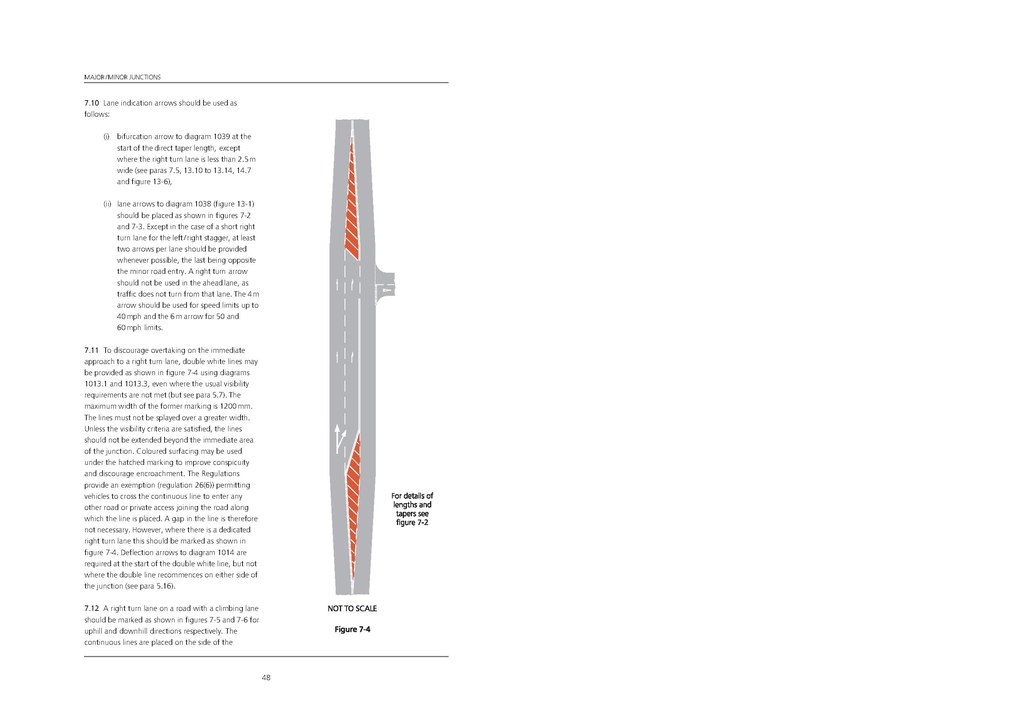7.10 Lane indication arrows should be used as follows:
(i) bifurcation arrow to diagram 1039 at the start of the direct taper length, except where the right turn lane is less than 2.5 m wide (see paras 7.5, 13.10 to 13.14, 14.7 and figure 13-6),
(ii) lane arrows to diagram 1038 (figure 13-1) should be placed as shown in figures 7-2 and 7-3. Except in the case of a short right turn lane for the left / right stagger, at least two arrows per lane should be provided whenever possible, the last being opposite the minor road entry. A right turn arrow should not be used in the ahead lane, as traffic does not turn from that lane. The 4 m arrow should be used for speed limits up to 40 mph and the 6 m arrow for 50 and 60 mph limits.

7.11 To discourage overtaking on the immediate approach to a right turn lane, double white lines may be provided as shown in figure 7-4 using diagrams 1013.1 and 1013.3, even where the usual visibility requirements are not met (but see para 5.7). The maximum width of the former marking is 1200 mm. The lines must not be splayed over a greater width. Unless the visibility criteria are satisfied, the lines should not be extended beyond the immediate area of the junction. Coloured surfacing may be used under the hatched marking to improve conspicuity and discourage encroachment. The Regulations provide an exemption (regulation 26(6)) permitting vehicles to cross the continuous line to enter any other road or private access joining the road along which the line is placed. A gap in the line is therefore not necessary. However, where there is a dedicated right turn lane this should be marked as shown in figure 7-4. Deflection arrows to diagram 1014 are required at the start of the double white line, but not where the double line recommences on either side of the junction (see para 5.16).
7.12 A right turn lane on a road with a climbing lane should be marked as shown in figures 7-5 and 7-6 for uphill and downhill directions respectively. The continuous lines are placed on the side of the
48
